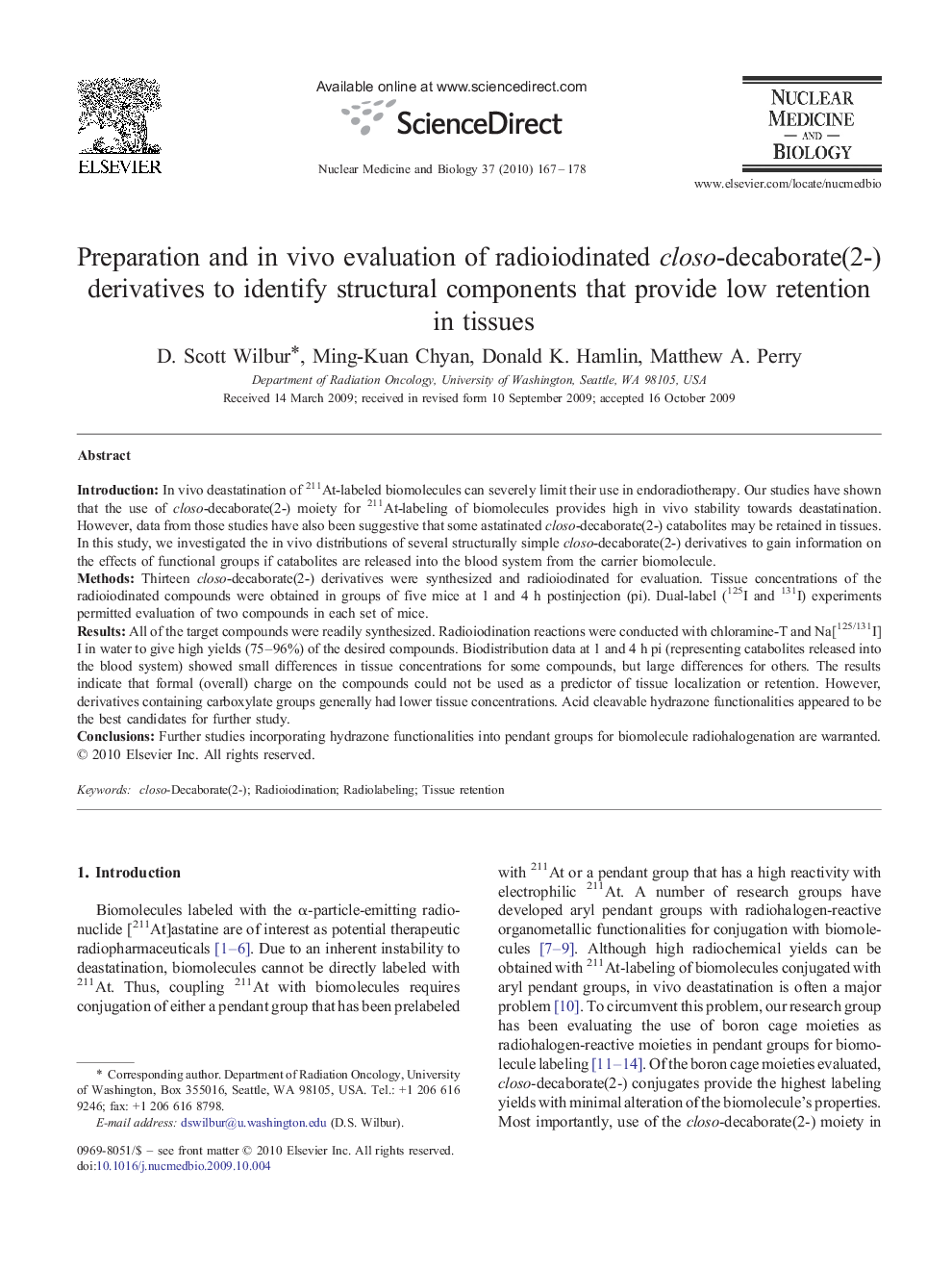| Article ID | Journal | Published Year | Pages | File Type |
|---|---|---|---|---|
| 2154186 | Nuclear Medicine and Biology | 2010 | 12 Pages |
IntroductionIn vivo deastatination of 211At-labeled biomolecules can severely limit their use in endoradiotherapy. Our studies have shown that the use of closo-decaborate(2-) moiety for 211At-labeling of biomolecules provides high in vivo stability towards deastatination. However, data from those studies have also been suggestive that some astatinated closo-decaborate(2-) catabolites may be retained in tissues. In this study, we investigated the in vivo distributions of several structurally simple closo-decaborate(2-) derivatives to gain information on the effects of functional groups if catabolites are released into the blood system from the carrier biomolecule.MethodsThirteen closo-decaborate(2-) derivatives were synthesized and radioiodinated for evaluation. Tissue concentrations of the radioiodinated compounds were obtained in groups of five mice at 1 and 4 h postinjection (pi). Dual-label (125I and 131I) experiments permitted evaluation of two compounds in each set of mice.ResultsAll of the target compounds were readily synthesized. Radioiodination reactions were conducted with chloramine-T and Na[125/131I]I in water to give high yields (75–96%) of the desired compounds. Biodistribution data at 1 and 4 h pi (representing catabolites released into the blood system) showed small differences in tissue concentrations for some compounds, but large differences for others. The results indicate that formal (overall) charge on the compounds could not be used as a predictor of tissue localization or retention. However, derivatives containing carboxylate groups generally had lower tissue concentrations. Acid cleavable hydrazone functionalities appeared to be the best candidates for further study.ConclusionsFurther studies incorporating hydrazone functionalities into pendant groups for biomolecule radiohalogenation are warranted.
